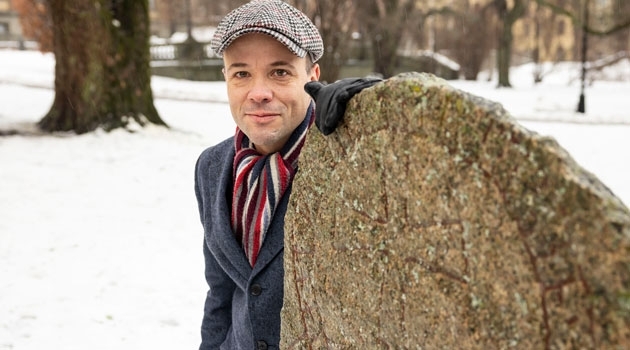All known runestones now documented digitally
Have you ever wondered whether there is an interesting runestone nearby? Or would it be useful for you as a researcher to have access to specific runic inscriptions? Whatever the reason, the new digital search tool “Runor” provides access to all known runic inscriptions around the world.
“In addition to Nordic runic inscriptions, the platform includes runic inscriptions in Nordic languages from Great Britain and even from Russia, Ukraine, and Turkey,” says Marco Bianchi at the Department of Scandinavian Languages and the person coordinating the project with other parts of Uppsala University and with the Swedish National Heritage Board.
The Department of Scandinavian Languages began working to collect and digitalize all Sweden and, later, even Nordic rune inscriptions in the 1980s. The results became the Scandinavian Runic Text Database, which was entirely aimed at researchers. But it was not particularly easy to access and the technical solution was becoming outdated.
Open for everyone
of Scandinavian Languages.
Photo: Mikael Wallerstedt
“The old database was appreciated by runic researchers but not particularly liked by those who were not well versed in the field. We wanted to keep the target group, i.e., the runic researchers, but also expand the service so that it could be used by others who work with related fields, like historians, archaeologists, history of religion researchers and anyone interested in runes who wanted to use or were interested in the material.”
The Runor platform launched on 3 December 2020 The platform lists all known runic inscriptions in Nordic languages around the world, over 7000, with translations to old Nordic dialects and English. There is still some finetuning to do, such as adding additional pictures and Swedish translations of all runic texts.
GPS feature
In addition to showing what the inscriptions say, there is also information about their dating, the carver’s name (if known), ornamentation, links to its antiquities record, the stone’s position and pictures of it. There is also a GPS feature that lists inscriptions near your location.
“This has been one of my obsessions. When you are out and have some time over, you want to be able to see if there is a runestone nearby.”
The oldest inscription in the new platform was carved in Primitive Norse in the 2nd century and the most recent runes are from the 20th century. In some places, including the provinces of Dalarna and Medelpad, the runic alphabet was used in folk traditions in parallel with the Latin alphabet well into modern times.
One click – many objects
in 1906. His collections are available in the new
latform. Photo: Oscar Juel/Alvin
“In addition to stones, runes can also be found on bone, pieces of wood, metal objects, weapons, and everyday items. Later inscriptions were often on everyday items like bowls. One fun thing about the new platform is that you can click on an object and see similar objects.”
Initially on the Viking’s stones, which were often raised for people who had died overseas, over time they began to be used to tell more everyday stories. The people who left their accounts in later inscriptions from Dalarna can often be identified.
“We can follow them in the church archives, and we can see connections in other historical documents. Fairly often, they describe girls who had been out watching the goats and a year.”
Technological challenges
The Runor platform is available on the website of the Swedish National Heritage Board, and it retrieves the data about the inscriptions from the database at Uppsala University. It seems fairly straightforward but making it has been a challenge.
“The hardest part has been coordinating the technical solutions at the University and the National Heritage Board. We underestimated the challenge somewhat in our ambition. We did not want to copy a database. Instead, we wanted to have our own database intact. The new interface works like a spider in the web, communicating between different systems.”
Eventually, material from Uppsala University Library’s collections on runic research from the 18th century and forward will be available on the platform. This includes notes, copies and photographs. The material can sometimes exceed the quality of recent photos or even a visit to the stone since air pollution and acidification have sometimes severely impacted inscriptions.
Åsa Malmberg

